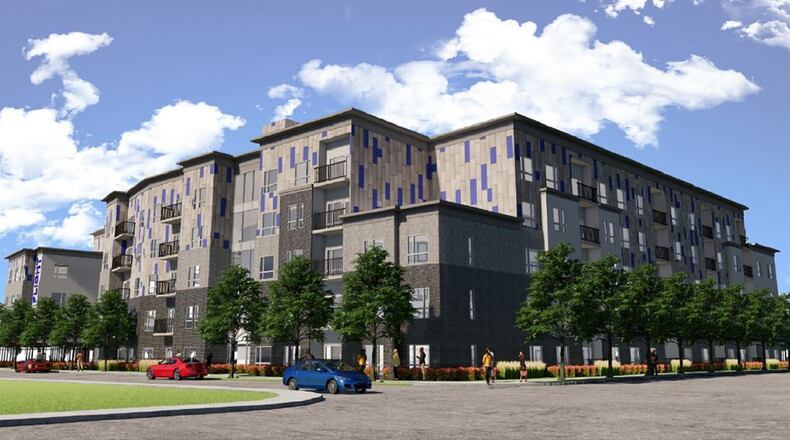A planned second phase would have doubled the number of units, increasing the total bed count to 606.
But neighbors and members of the Dayton Plan Board said the buildings are incompatible with the surrounding area, which includes some historic single-family homes and low-rise commercial buildings.
The Plan Board continued the case to give the developer an opportunity to revise the plans to try to satisfy their concerns and those of the neighborhood.
MORE: South Park residents worried about $35M apartment project
But Robert Fiorita, the developer and property owner, said the project adheres with zoning and city code and should not be rejected just because people do not like the design style.
“At some point, the person who is sponsoring this should have a pretty large voice especially when the laws that were written by the city, approved and have been on the books a long time are being complied with,” he said.
RE NVC Dayton II LLC wanted to build 109 new apartments on the former school property, which is a vacant field east of the Taco Bell on Brown Street.
Fiorita, who owns the company, proposed constructing a new five-story apartment building on the eastern edge of the property that would offer fully furnished apartments with balconies. He planned to construct another building in a second phase.
Fiorita said he expected the units would be most popular among University of Dayton students, but also may attract young professionals, including staff and residents at the nearby Miami Valley Hospital.
MORE: Plan calls for hundreds of apartments at South Park, near UD
The apartment complex, called the Flight at Dayton, would have a club house, game room, fitness center, pool, outdoor grilling areas and other possible amenities like a WiFi cafe, tanning beds and yoga room.
The buildings would have enclosed inner courtyards, and units would offer between one and four bedrooms.
Fiorita said his company bought the former school property because it is zoned for large, institutional uses like multi-family housing.
But South Park residents said are worried about the impact on the neighborhood, including increased traffic, noise and parking hassles.
The Greater Downtown Land Use Board and Historic South Park Inc. both opposed the project.
The South Park community is pro-development, but the developer did not even try to engage the neighborhood to get feedback and figure out a project that is consistent with the character of the area, said Jeff Peterson, a South Park resident.
“Candidly, the neighborhood and land use board feel that this project is being jammed down our throats and it’s a take-it or leave-it proposition,” he said.
Some neighbors criticized the modern and urban design of the buildings, which would have brick and “upscale” hardieplank siding.
Fiorita said the designs are consistent with the modern trends in multi-family housing. He said there are multiple apartment buildings with similar designs at the edge of The Ohio State University campus.
But Dayton Plan Board member Greg Scott said that doesn’t make the project appropriate for this specific location.
“Maybe it’s the state of multi-family housing at Columbus at The Ohio State University campus — doesn’t mean it’s the state of multi-family housing at the edge of a historic neighborhood in Dayton, Ohio,” he said. “We’re not the same city.”
South Park residents and Plan Board members said they were impressed by the design of the Miami Preserve, which is another project by New Village Communities, the parent company of RE NVC Dayton II.
The student housing development at Miami University in Oxford has a Georgian architectural style, popular at many colleges.
Peterson said the neighborhood would like to work with the developer to try to figure out a more suitable project for this site.
MORE: Family seeks answers about Dayton man involved in kidnapping case
Fiorita expressed frustration with how his plan was being evaluated because he said it complied with code and is entirely appropriate for the zoning district. He said the project meets all of the five criteria for general development plans, and the biggest complaint seemed to be about the modern style.
He said the zoning district does not require Georgian-style architecture.
He said, “To get more blunt, we’re not interested in building anything like Oxford. It doesn’t comport to how much we paid for the property. It doesn’t work.”
.
About the Author

